Yesterday I featured the Monarch butterfly and its relationship to the milkweed plant. Today, I would like to share a series of milkweed pictures that I took from June to October of this year. The plant is beautiful, featuring broad strong leaves with a reddish vein going up the centre, aromatic pink flower clusters, slender green textured pods that turn brown and crack, revealing silky white filaments attached to brown teardrop seeds. All of this is documented in the photos below, but first I would like to indulge in a few words about milkweed and its ecology.
The milkweed genus, Asclepias, is named after the Greek God of healing, Asclepius, because of the healing properties of its milky sap. The sap is also toxic and is eaten by some animals, such as the monarch caterpillar, to ward off predators. Milkweed is not only propagated in the wind by white floss; it also multiplies by sending out underground rhizomes which sprout new plants (that’s why I have several plants growing next to each other). If you think of these plants as ‘weeds’, this could be a nuisance, but if you have embraced them as friends, this is excellent news.
Milkweed is a friend to many insects and plants. Some insects are completely dependent on milkweed as a food source. These would include monarch caterpillars, milkweed bugs, and milkweed leaf beetles. For an excellent photo of orange milkweed bugs, visit PrairieChat’s ‘Taste of Minnesota Fall’ photo collection. Milkweed nectar is sipped by butterflies, native bees, and wasps; and many animals, such as spiders, small birds, and mice use the plant as shelter. For more ecology details check out this milkweed profile.
I would like to thank Sylvain Landry of Sylvain-Landry.com, for the added incentive to publish this collection of photos, offered by his SL-Week 13: Ecology photo challenge, which closes in a few days.
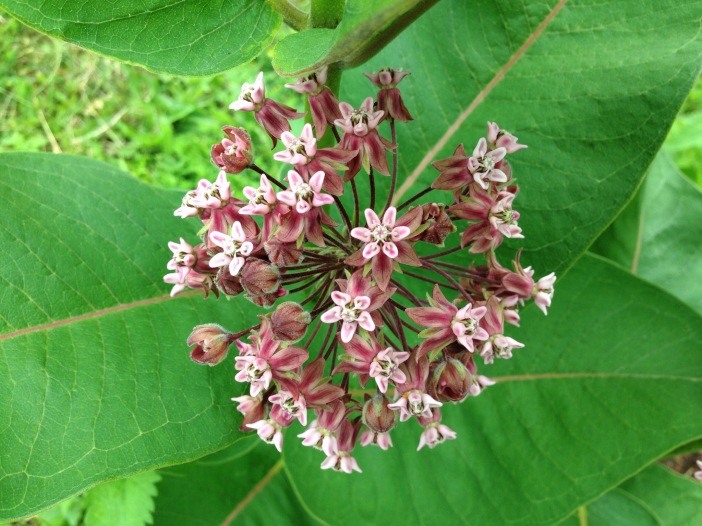
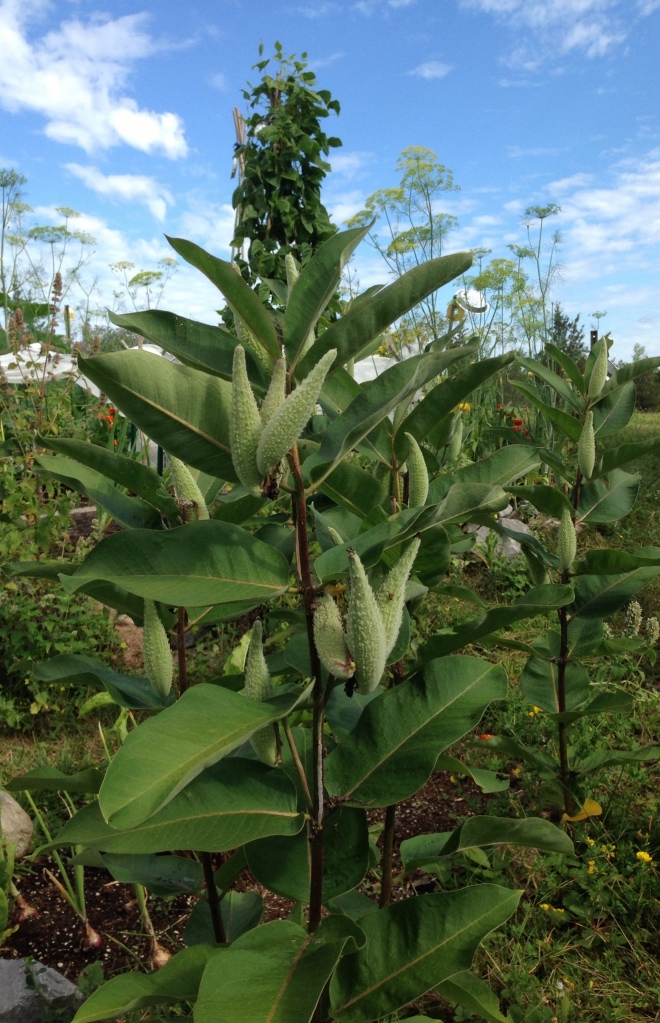


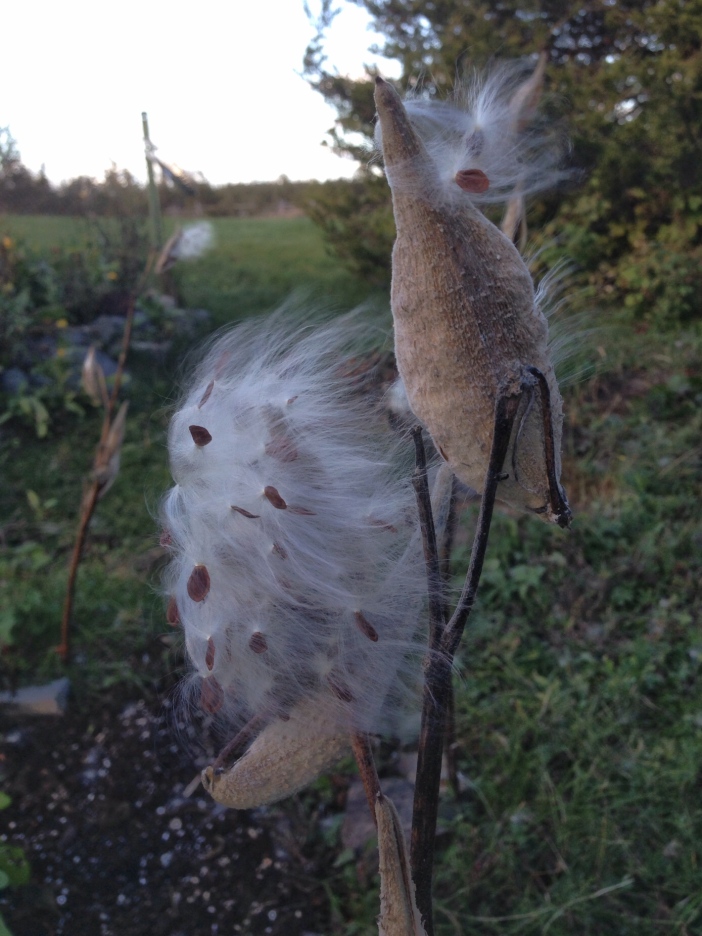
‘Slowly the pod would open, letting fly
Transparent chains of pearls across the sky.’
From The Milkweed Pod by Elizabeth Bohm.
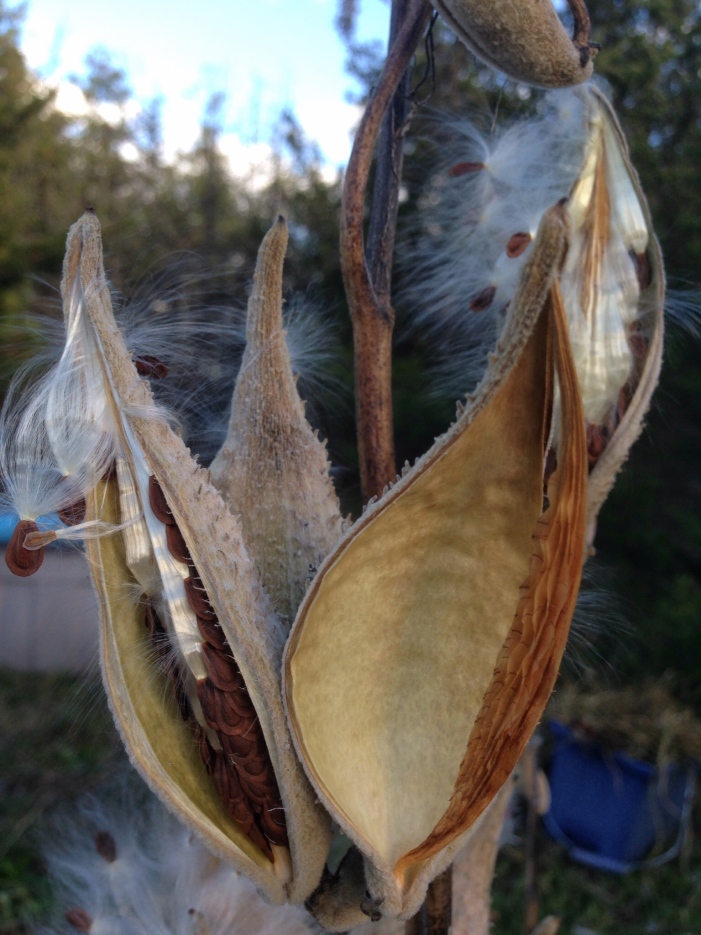
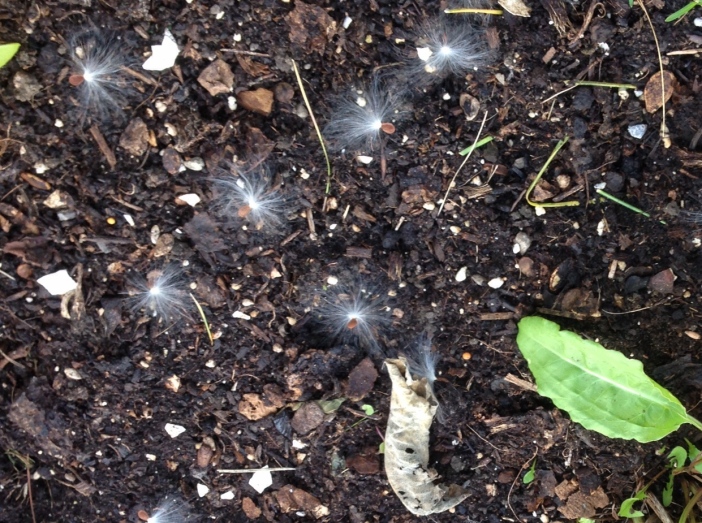
Milkweed seeds lying on garden soil, as stars in a night sky, offering hope of fresh growth next year.
©2015, All rights reserved by Ontheland.wordpress.com
Love this post. Such beautiful close-ups of the pods.
LikeLiked by 1 person
Thanks Olga– I like the pods too.
LikeLiked by 1 person
A fantastic sequence of shots showing a half year in the life of the Milkweed plant.
LikeLiked by 1 person
Thank you! Is a milkweed species common in the area that you live in?
LikeLike
No, nothing like these plants, they are quite unusual. What we call milk thistle is as close as we get. Its a small introduced plant from Europe plant that has a thick white substance in its stem with a small flowery head. Birds seem to like them. Australia has such a unique mix of indigenous Flora mostly unlike anything else in the world.
LikeLiked by 1 person
Well done for the challenge And welcome to the entertainement….
LikeLiked by 1 person
Thank you for the topic!
LikeLiked by 1 person
Amazing photos. Writer and photographer?
LikeLiked by 1 person
Thanks for your compliment. I think of myself as a writer (lower case w) who likes to take pictures and hopes they work out.😊
LikeLiked by 1 person
Oh, you are a Writer.
LikeLiked by 1 person
Magnifique!
LikeLiked by 1 person
Thank you 🙂
LikeLike
Great photos, Janice. After so many years of planting milkweed seeds, we finally planted milkweed roots. They sprouted! We are thrilled, but no pods yet. ~Nan
LikeLiked by 1 person
Thank you, Nan. That’s great that your milkweed sprouted. Even if they don’t flower and/or if pods don’t form, I believe milkweeds are perennial so there’s hope. They grow in the wild around my home and I try to support them as much as possible. Unfortunately there is one root system that has tried to compete with my small vegetable garden (good soil) so I had to cut. A plant resurfaced by the garden fence and that was fine!
LikeLike
Hi Janice,
Our milkweed has flowered, but I don’t know whether pods will form this late in the season. Yet, I suspect we’ll get them back next year. I realize their root system is pretty strong. My husband tried to dig one up and he found it to be impossible. That’s when he ordered the roots, which we planted earlier in the year. Still being hopeful, he also planted more seeds. I don’t know that we’ll have any better luck with these seeds than we had with the others. At least the roots should produce plants next year even if the seeds don’t. We just hope to help the monarchs when they visit our wildflower garden.
LikeLiked by 1 person
Sounds great Nan. I’m sure they’ll multiply over the years 🤞. Their flowers are attractive and it feels extra special seeing Monarchs these days knowing their plight.
LikeLike